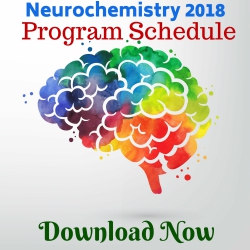
Owolabi Joshua Oladele
Babcock University, Nigeria
Title: Caffeine prenatal exposure caused persistent alterations in astrocyte morphology in experimental models
Biography
Biography: Owolabi Joshua Oladele
Abstract
There are concerns over the consumption of caffeine during pregnancy and early years of life due to the susceptibility of the brain to the stimulant. The aim of this investigation is to assess the effects of pre and postnatal caffeine ingestion on the development of the frontal cortex of mice models. A total of 32 (n=32) adult mice (Mus musculus) were recruited primarily for the study. They were divided into four groups labelled A, B, C and D which include the Control, Low-Dose, Medium- Dose and High-Dose groups respectively. Treatment duration had Phase I and Phase II to assess pre and postnatal effects respectively. In Phase I, Groups B, C and D were given 10mg/kg, 50mg/kg 120 mg/kg body weight of water-dissolved caffeine respectively while Group A animals served as the control. Mating was allowed and the pregnant female mice were administered caffeine from the day 0 (E0) of pregnancy until parturition. Half of the offspring were sacrificed at birth. The remaining offspring from the Phase I experimental animals were recruited into the phase II for postnatal caffeine administration. Phase II [postnatal] treatment started from parturition until postnatal Day 35 marking the average age of puberty. Brain specimens were excised and processed at the end of Phase I and Phase II. Histo and immunochemical properties of the frontal cortex were demonstrated using the Feulgen DNA and GFAP techniques. High caffeine dosage administration during pregnancy produced general cytological and histoarchitectural disruptions and distortions that affected glia as well as other cell types. Cell staining patterns are largely heterogeneous as much as they are in morphological appearances. Astrocytes, staining positive for GFAP, had altered morphologies. Processes are quite sparse and hardly readily observable. These observations indicate possible limitations or retardations in astrocyte differentiation as a result of caffeine effects.

